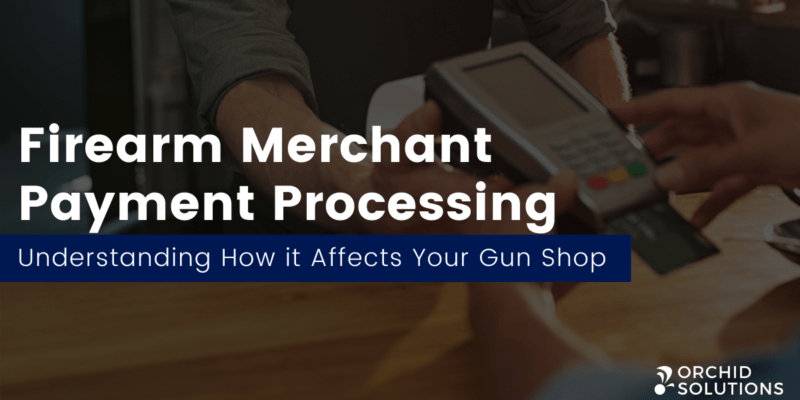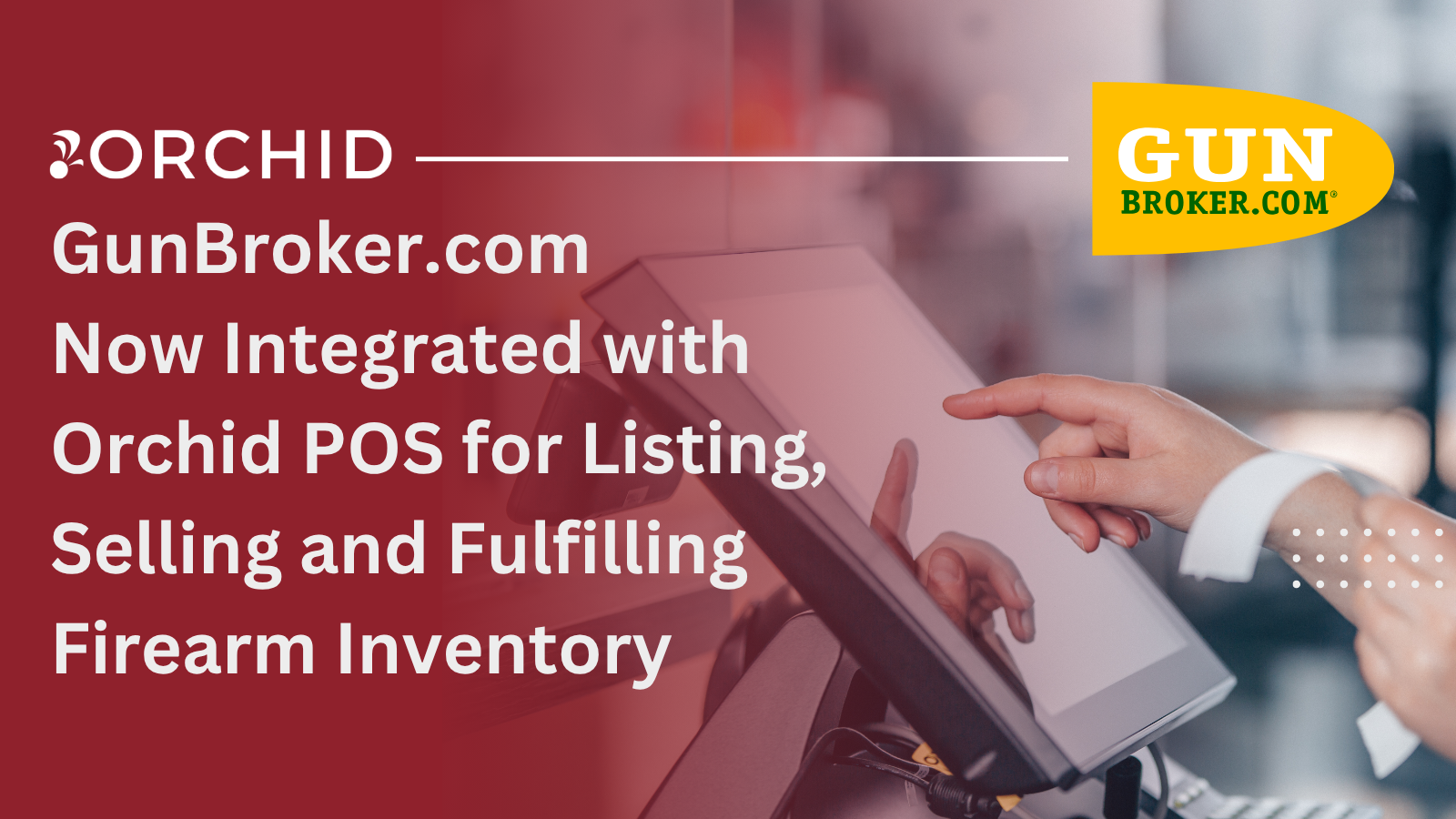Payment processing, merchant processing and credit card processing are interchangeable terms used to describe the method for accepting non-cash payments from customers. It is applicable to retailers, online marketplaces and even manufacturers and distributors who accept payment in the form of credit cards, ACH and similar means. However, understanding what it is and how it affects your business is not always understood by those who rely on it.
The following is the first of a multi-part series that breaks down the complex environment of payment processing into simple, digestible bites. We’ll explain what payment processing is, what makes firearm transactions unique, explain how a firearm merchant can get an account, discuss hardware options, and unravel the myriad of fees that reduce your daily sales income.
Payment Processing
If you own or operate an FFL then you likely accept multiple forms of payment from your customers. In order for those customers to consummate a transaction and for you to subsequently receive funds in the bank, your business needs to be approved by a credit card processing company and to be provided an authorized Merchant ID (or “MID”).
The parties involved in a non-cash payment processing chain are as follows:
- The card holder (e.g., the individual or business making the purchase – in this example “Sally”)
- You, the firearm merchant with your Merchant ID (Joe’s Gun Shop)
- A firearm industry ISO/ISA who “boards” your account onto the payment processor (Orchid Pay)
- The payment processor itself (Global / TSYS)
- The credit card network (Visa)
- The issuing bank (Sally’s bank)
- The merchant bank ( Joe’s Gun Shop’s bank)
Card-Present and Non-Card Present
As you know from your own personal and professional shopping experiences, credit cards are not always “present” during a transaction. Generally speaking, card-present refers to in-store transactions where the card holder and their credit card are physically present for the transaction. At the point of payment, the customer “swipes, dips or taps” their card into a card reader. On the other hand, a growing number of purchases are non-card present meaning the consumer and their credit card are not physically present at the time of purchase. Non-card present transactions primarily relate to online, eCommerce sales and over the phone sales.
Step 1 – Authorization
The first step in the payment “process” is authorization. It begins when a card holder swipes, dips, taps, enters or speaks their credit card information into a device or phone. The transaction and card details run through the processor (TSYS), through the network (Visa) and to the issuing bank (Sally’s bank). The purpose is to ensure that the card and card holder are legitimate and that enough funds exist to cover the transaction.
Step 2 – Settlement
Provided that the transaction is authorized, and the actual sale is consummated, it will later “settle.” This is a fancy way of saying that the transaction is now complete. However, no actual funds have changed hands – yet. At this point, Sally has been authorized by her bank and leaves Joe’s Gun Shop with a new pistol having successfully completed her NICS background check and ATF Form 4473.
Step 3 – Transferring Funds
After settlement, funds need to be withdrawn from Sally’s bank to pay the owner of Joe’s Gun Shop. The process for settling funds can be as fast as same day but in most cases take one to two days. Depending on the nature of Joe’s business and his relationship with his firearm ISO / ISA (Orchid Pay) and his processor (TSYS) the time to complete settlement can vary a bit.
How Retail Gun Stores Can Obtain a “High Risk” Firearm Merchant Account
Unfortunately, the sale of firearms has been deemed to be high risk by the networks and banking institutions for a number of reasons (for right or for wrong, from our perspective). Classifications such as this are levied based upon the number of fraudulent transactions in a given market, customer chargebacks, political banking pressures and other factors deemed to be credit risks.
Fortunately, high risk doesn’t mean that a Type 01 FFL can’t get a Merchant ID. In fact, the majority of established gun stores in our industry accept payment for both in-store and online transactions. The high-risk category doesn’t prohibit an account, but can increase the cost of the services charged by the non-cash payment processing chain.
It is important to note that regardless of industry, non-card present transactions are also deemed to be higher risk than in-store, card-present transactions. The reason? You guessed it. Online sales are more susceptible to fraud which subsequently increase the cost structure of the processor, networks and banks who pass those costs along to “Joe’s Gun Shop” through increased rates.
Regardless of the risk factor, firearm merchants are quite capable of obtaining a merchant ID simply by completing an underwriting application, no different than a merchant outside of the shooting sports industry. If you’re in need of a firearm payment processing account or are seeking to escape anti-firearm bias or higher than normal rates, let the team at Orchid Pay lend a hand. Our executives have managed over 2,000 shooting sports merchant accounts including startup to major retailers and major manufacturers.
Check back next month as we dive deeper into the world of firearm payment processing.
Ready to Learn More About Orchid’s Expanded Offerings? Contact Us Today.







0 Comments